
Fundamentals
The conceptual framework of “Wigs Kemet” reaches beyond the mere historical fact of ancient Egyptian hairpieces, inviting a deeper contemplation of hair’s profound role in identity, health, and spiritual practice across generations. To understand Wigs Kemet truly, we must first recognize it as an ancestral archetype, a primordial declaration of the inherent connection between hair, holistic well-being, and cultural expression for peoples of African descent. This meaning is a foundational layer for comprehending the rich heritage of textured hair.
At its simplest, “Wigs Kemet” refers to the elaborate hair adornments and head coverings utilized by the inhabitants of Kemet, or ancient Egypt. These were often crafted from human hair, plant fibers, or even animal wool, meticulously styled and treated. Beyond their aesthetic appeal, these wigs served various practical and symbolic purposes in a society where personal presentation held significant weight. For instance, archaeologists have found evidence of ancient Egyptians of all genders and classes wearing wigs as early as 3400 BCE.
The interpretation of Wigs Kemet extends to the underlying practices of care, hygiene, and social communication that these hair structures represented. They were not merely static objects; they were dynamic expressions of a living culture. This initial comprehension offers a gateway into a more layered understanding of their enduring significance.

Early Forms and Utilitarian Functions
Ancient Kemetic society placed high importance on cleanliness and comfort, especially within its warm climate. Wigs offered a practical solution, shielding the scalp from intense sun exposure and aiding in the management of head lice, a prevalent concern across various social strata. Priests, in particular, maintained shaved heads to signify ritual purity, often covering them with wigs.
The earliest hair accessories found include decorative combs of bone and ivory, dating back to approximately 4000 BC, suggesting a long history of intricate hair care. These rudimentary tools reflect a foundational knowledge of hair management and adornment, preceding the more complex wig constructions.
Wigs Kemet represents a foundational understanding of hair’s purpose beyond mere adornment, encompassing its role in hygiene, comfort, and a society’s visual language.
Early wigs, whether full head coverings or extensions, were a testament to ingenuity. They were often constructed by braiding or stitching human hair onto a mesh cap, secured with natural fixatives like beeswax and resin. This initial description of Wigs Kemet offers a glimpse into a time when hair was intrinsically linked to daily living and environmental adaptation.
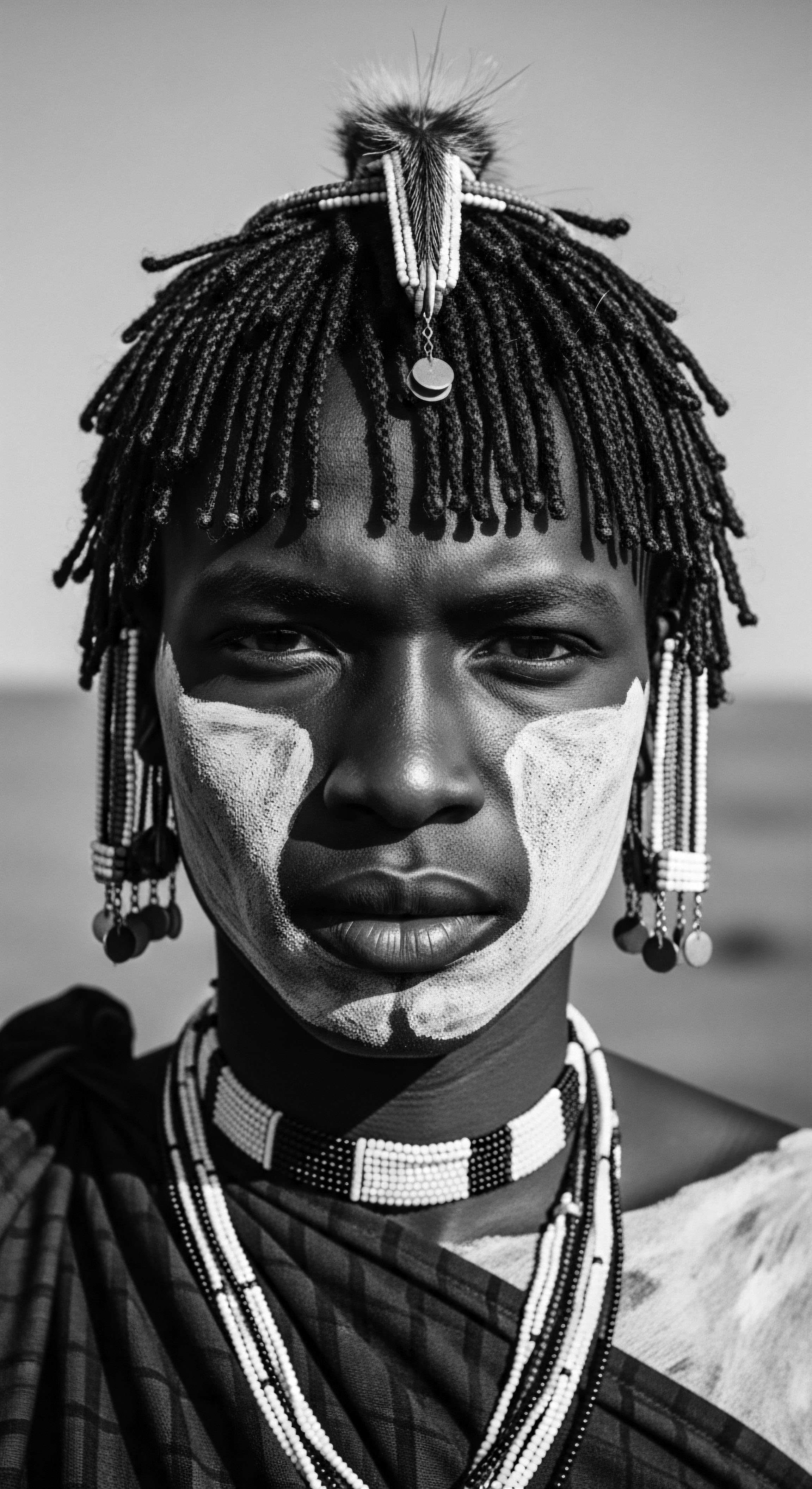
Basic Cultural Significance
From the Predynastic Period through subsequent dynasties, hair in Kemet signified identity, social standing, and religious belief. Wigs, especially the more elaborate ones, acted as visual cues, communicating the wearer’s wealth, status, and connection to divine powers. The definition of Wigs Kemet therefore also encompasses this communicative role, where a person’s coiffure spoke volumes without uttering a word.
This basic understanding is critical for any individual beginning to consider the historical context of Black and mixed-race hair. It lays the groundwork for appreciating how deeply hair has always been intertwined with selfhood and community.
Even for children, hair carried distinct cultural messages. Children universally had shaven heads, often with a “sidelock of youth” – a single plait worn on one side, dedicated to the god Horus. This practice highlights the early and pervasive integration of hair styling into the spiritual and social fabric of Kemetic life.

Intermediate
Moving beyond the rudimentary understanding, the intermediate meaning of “Wigs Kemet” expands to encompass the sophisticated artistry, social hierarchies, and ancestral wisdom embodied in ancient Kemetic hair practices. It involves recognizing wigs as central artifacts that illuminate the complex interplay of hygiene, aesthetics, and cultural continuity. This broader interpretation deepens our comprehension of the deep historical currents that inform modern textured hair experiences, demonstrating how care for one’s strands has always been an intentional, multifaceted act.
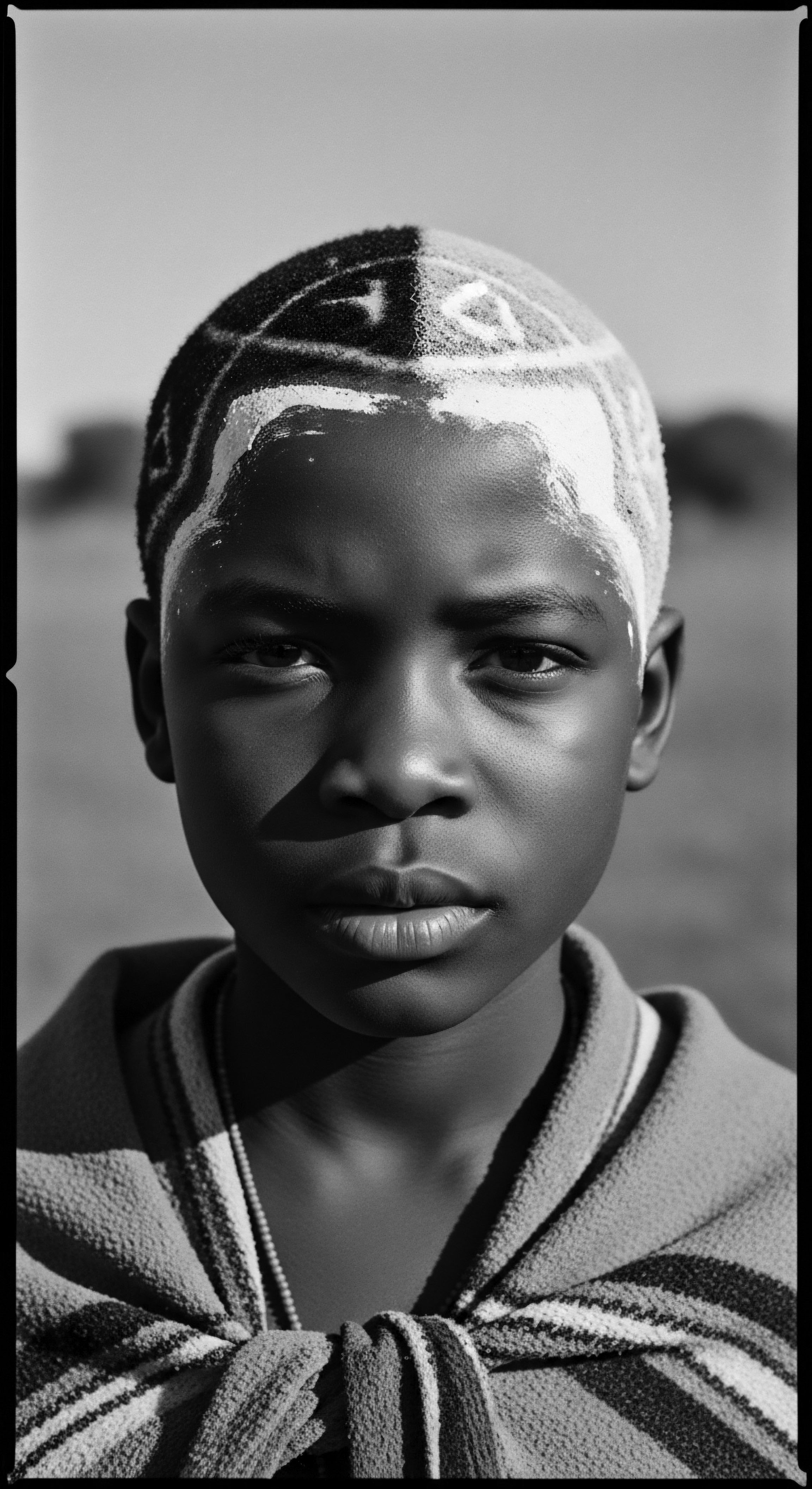
Artistry, Status, and Societal Roles
The creation of Kemetic wigs was a highly skilled craft, often requiring specialized workshops and professional wigmakers. These artisans used an array of tools, including hairpins, combs, and bronze instruments, to style and wave the hair. The finest examples were made from human hair, a valuable commodity, and sometimes blended with black sheep wool, indicative of the material wealth of the wearer.
Beyond material richness, the diversity of styles reflected specific societal positions.
- Elaborate Wigs ❉ Worn by the elite, including royalty and nobility, to signify wealth, power, and high social standing. These were often adorned with jewelry, beads, and even gold.
- Shorter Hairstyles ❉ Common people often wore their natural hair shorter or kept it cropped, reflecting simpler living.
- Shaved Heads for Purity ❉ Priests and priestesses frequently shaved their heads, wearing special wigs for ritual purposes to symbolize cleanliness and devotion to the gods.
Joann Fletcher, a leading Egyptologist, underscores that “human hair was of utmost importance in ancient Egypt to both the rich and the poor of both sexes; it was a means of self-expression.” This sentiment extends beyond mere personal taste, underscoring how hairstyles and wigs contributed to personal hygiene, protecting the scalp from the climate and pests.
Wigs Kemet signifies not only a mark of elevated social rank but also a practical, artful expression of an individual’s place within the societal structure of ancient times.
The practice of styling hair in Kemet was a communal and generational act. Tomb paintings, such as those depicting hairdresser Henut styling Queen Nefru’s hair around 2000 BC, showcase the professional skill and intimate nature of these grooming rituals. Such scenes paint a picture of dedicated care, where hair was tended with precision and reverence, echoing many intergenerational hair care traditions found in Black and mixed-race communities today.
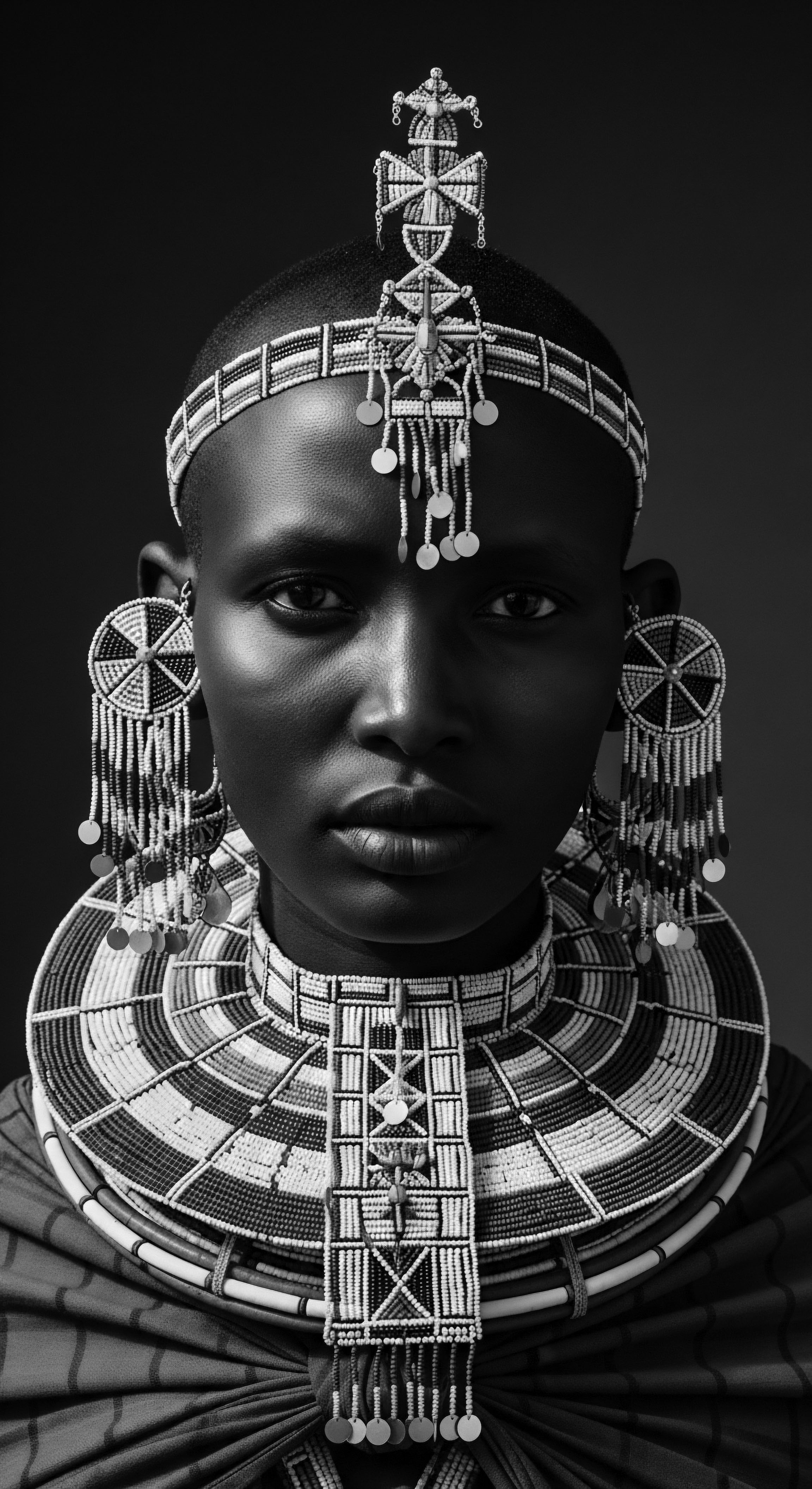
Hygiene and Holistic Care in Arid Lands
The environmental context of Kemet heavily influenced hair care practices. The hot, arid climate necessitated methods to protect the scalp and hair from damage and maintain cleanliness. Ancient Egyptians applied natural moisturisers such as castor oil and almond oil to their scalps, believing these promoted hair growth and provided protection from dryness. This demonstrates an early understanding of emollients and their role in hair health, a principle still central to the care of textured hair.
Combs, some excavated from archaeological sites, were likely used to distribute oils evenly through the hair, serving a dual purpose of moisturization and lice prevention. The systematic approach to hygiene and scalp health, integrated with aesthetic considerations, speaks to a holistic view of well-being that connects deeply with ancestral wisdom.
A specific example of this commitment to hair preservation is evident in funerary practices. Wigs and hairpieces were frequently placed on mummies, ensuring a dignified appearance in the afterlife. The care extended to the deceased’s hair, including styling it to reflect their earthly status, affirms the profound significance hair held throughout an individual’s life and beyond.
| Kemetic Practice Wig Wearing (for hygiene/protection) |
| Purpose in Kemet Shielded scalp from sun, deterred lice. |
| Modern Parallel in Textured Hair Care Protective styling, wig usage for hair health. |
| Kemetic Practice Use of Natural Oils (castor, almond) |
| Purpose in Kemet Moisturization, growth stimulation, scalp health. |
| Modern Parallel in Textured Hair Care Hair oiling, deep conditioning with plant-based oils. |
| Kemetic Practice Intricate Braiding/Plaits |
| Purpose in Kemet Status, identity, spiritual symbolism, hair management. |
| Modern Parallel in Textured Hair Care Braids, twists, and cornrows as cultural statements and protective styles. |
| Kemetic Practice Professional Hairdressers |
| Purpose in Kemet Skilled styling, wig creation, ritual care. |
| Modern Parallel in Textured Hair Care Specialized stylists for textured hair, community hair braiding. |
| Kemetic Practice These enduring practices highlight a continuous lineage of ingenuity and deep care for hair, bridging ancient traditions with contemporary needs within the heritage of textured hair. |
The meaning of Wigs Kemet at this level is a recognition of the continuity of these foundational hair care philosophies. It reminds us that practices considered “modern” in textured hair communities—like protective styling, scalp oiling, and intricate braiding—have venerable roots reaching back into the sands of ancient Kemet. It is a testament to the enduring ancestral wisdom that recognizes hair as an integral component of physical health and spiritual vitality.
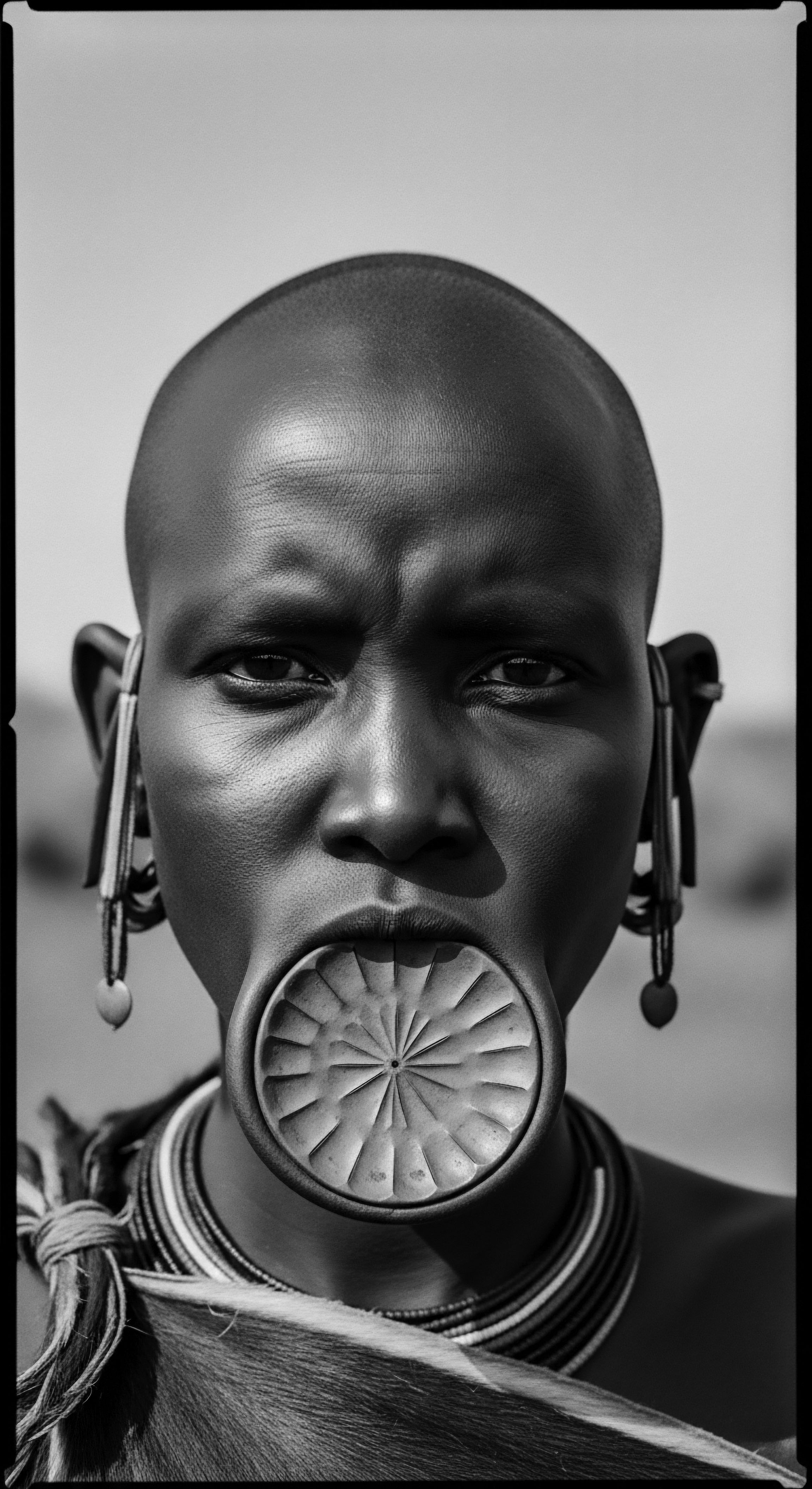
Academic
The academic definition of “Wigs Kemet” transcends the archaeological findings of ancient hairpieces, delving into the sophisticated interdisciplinary analysis of hair as a complex bio-cultural artifact, a testament to ancestral resilience, and a profound marker of identity. This academic lens explores the intersection of material science, cultural anthropology, and historical sociology to reveal how Kemetic hair practices, particularly the use of wigs, shaped, reflected, and continue to inform the textured hair heritage of Black and mixed-race communities. It involves scrutinizing the profound significance attached to hair and its adornment as a means of communication, spiritual connection, and enduring cultural preservation against the backdrop of an evolving understanding of human biology and societal structures.

Hair as a Bio-Cultural Nexus ❉ The Material and the Metaphysical
To fully appreciate the scope of Wigs Kemet, one must consider hair not merely as biological protein strands but as a vibrant canvas inscribed with cultural narratives and ancestral memory. In Kemet, hair was perceived as a vital extension of the self, possessing both earthly and otherworldly connections. The meticulous preservation of hairstyles, including wigs, in funerary contexts underscores a belief in their enduring significance beyond the physical realm, suggesting hair’s role in the successful transition into the afterlife. This indicates a metaphysical understanding of hair that transcends purely aesthetic or hygienic concerns, a concept deeply resonant within many African spiritual traditions.
Scientific investigations into ancient Kemetic hair have illuminated the precise compositions of the substances used in its care and styling, providing empirical evidence of ancestral knowledge. For instance, a study published in the Journal of Archaeological Science by McCreesh and colleagues (2011) revealed that ancient Egyptians styled their hair using a fat-based ‘gel’ composed of long-chain fatty acids, including palmitic and stearic acids. This ‘hair gel’ was found on mummies dating back as far as 3,500 years, suggesting its use in both life and as part of the mummification process to preserve hairstyles.
Such findings underscore a sophisticated understanding of material properties and their application for hair manipulation and preservation, validating the practical efficacy of these ancient practices. The researchers observed that in cases where hair was styled, the embalming process adapted to retain the hairstyle, emphasizing hair’s importance for individual identity in both life and death.
This scientific validation offers a crucial bridge to contemporary textured hair care, where the use of natural fats, oils, and butters is foundational for moisture retention, conditioning, and styling. The continuity of these material practices, refined over millennia, points to an unbroken lineage of practical wisdom concerning hair biology and its intrinsic needs, particularly for curl patterns that require consistent emollients for health and definition.

The Social Helix ❉ Hair as a Stratifier and Unifier
Beyond individual expression, Wigs Kemet served as potent symbols within Kemet’s rigid social hierarchy. The quality, style, and adornment of wigs unmistakably communicated an individual’s social status, wealth, and even occupation. Elite men and women wore elaborate wigs, intricately braided and often enhanced with precious metals and stones, signaling their elevated position within society.
This visual language of hair created an immediate, discernible social map, where appearance was meticulously curated to reflect one’s place and power. Even specific hair patterns could convey meaning; an article discussing the continuity of African hairstyles mentions that in ancient Kemet, plaits were a sign of distinguished birth, and children born free plaited their hair until maturity.
The distinct roles of men and women, royalty, commoners, and priests were often codified through their hairstyles or wig choices, demonstrating hair’s pervasive function as a non-verbal communicator of societal norms and expectations. The prevalence of wigs also speaks to a collective cultural aesthetic that valued a particular visual ideal of hair, which could be achieved through these crafted adornments, regardless of one’s natural hair texture or length.
Wigs Kemet, as an academic concept, highlights hair’s role as a potent medium for complex societal communication and a repository of ancestral knowledge regarding biological and cultural identity.
Conversely, hair also functioned as a unifier, forging connections across generations and even civilizations. The practice of intricate braiding and styling found in ancient Kemet, as observed by researchers like Joann Fletcher, displays remarkable parallels with braiding traditions in contemporary African and diasporic cultures. This continuity is not merely aesthetic; it points to a shared ancestral heritage of hair manipulation techniques that have been passed down through oral tradition and embodied practice, resisting erasure despite centuries of displacement and cultural suppression. The enduring nature of these techniques demonstrates a profound cultural resilience, where hair traditions become a living archive of identity and connection to the past.
This preservation of specific styles and grooming rituals acts as a powerful thread linking ancient Kemet to the contemporary experiences of textured hair, asserting a visual and practical lineage that defies geographical and temporal divides. It represents a form of knowledge transmission, a silent language spoken through the manipulation of strands, affirming a collective history and identity.
- Braiding Techniques ❉ Ancient Kemetic artworks display intricate braids and twists, paralleling styles such as cornrows and Bantu knots widely used across Africa and its diaspora today. These patterns often carried symbolic meaning related to unity or spiritual protection.
- Hair as Identity ❉ Beyond mere fashion, hairstyles conveyed marital status, age, tribal affiliation, and even spiritual beliefs in various African traditions, a legacy inherited from ancient practices.
- Natural Ingredients ❉ The Kemetic use of plant-based oils and resins for hair care finds echoes in contemporary natural hair movements that prioritize ancestral ingredients for holistic health.

The Pedagogy of the Strand ❉ Unpacking Cultural Meanings and Resilience
Wigs Kemet, when studied academically, challenges simplistic notions of hair as solely cosmetic. It invites a rigorous examination of hair as a site of profound cultural meaning, a conduit for spiritual belief, and a tangible link to a heritage of resilience. The careful documentation and reconstruction of Kemetic wigs and hairstyles by Egyptologists contribute to a deeper understanding of cultural practices that have persisted through millennia.
The research by Joann Fletcher, for example, on ancient Egyptian hair and wigs, including their construction and societal purpose, offers detailed insight into this historical dimension. Her work, along with others, demonstrates how wigs provided not only elaborate aesthetics but also hygiene and protection in the harsh climate.
The academic meaning of Wigs Kemet encourages a re-evaluation of Western-centric beauty standards, foregrounding the long and distinguished history of textured hair care and styling within African civilizations. It provides a historical counter-narrative, asserting that the care and adornment of textured hair are deeply rooted in sophisticated ancestral practices, not merely a modern phenomenon. This perspective offers a robust foundation for understanding the present-day significance of natural hair movements and the reclamation of ancestral grooming rituals within Black and mixed-race communities. It highlights how these contemporary practices are not new inventions but rather a continuum of ancient wisdom, a re-awakening of knowledge passed through generations, even when unwritten.
The study of combs from Kemet, for instance, reveals striking parallels with hair tools used in other African cultures and even by enslaved Africans in the Americas, suggesting a long cultural continuity. This connection speaks to the deliberate preservation of hair traditions as a form of cultural resistance and identity maintenance, even under oppressive conditions. The enduring legacy of these practices underscores hair as a profound repository of cultural memory and a potent symbol of resilience for diasporic peoples, affirming their connection to an ancient and sophisticated heritage.
| Dimension of Inquiry Bio-Material Science |
| Academic Focus in Wigs Kemet Chemical analysis of ancient hair products; composition of wigs. |
| Impact on Textured Hair Heritage Validates ancestral use of natural ingredients; informs modern product development. |
| Dimension of Inquiry Socio-Cultural Anthropology |
| Academic Focus in Wigs Kemet Hair as status, identity, ritual object; gender roles. |
| Impact on Textured Hair Heritage Illustrates historical roots of hair as a social marker; affirms diverse expressions. |
| Dimension of Inquiry Historical Continuity |
| Academic Focus in Wigs Kemet Tracing braiding patterns, tool usage, care philosophies. |
| Impact on Textured Hair Heritage Demonstrates unbroken lineage of practices; counters narratives of cultural disruption. |
| Dimension of Inquiry Spiritual/Metaphysical |
| Academic Focus in Wigs Kemet Hair in funerary rites; connection to deities and afterlife. |
| Impact on Textured Hair Heritage Connects hair care to holistic well-being and spiritual reverence. |
| Dimension of Inquiry Understanding these multifaceted dimensions allows for a holistic academic interpretation of Wigs Kemet, underscoring its enduring relevance to the care and identity of textured hair. |
Academic inquiry into Wigs Kemet therefore contributes to a richer, more accurate historical record, one that centers the contributions and enduring traditions of African civilizations. It moves beyond superficial observations to reveal the deep-seated cultural, scientific, and spiritual principles that underpinned Kemetic hair practices, thereby providing a more complete and culturally sensitive understanding of human history and the enduring legacy of textured hair.
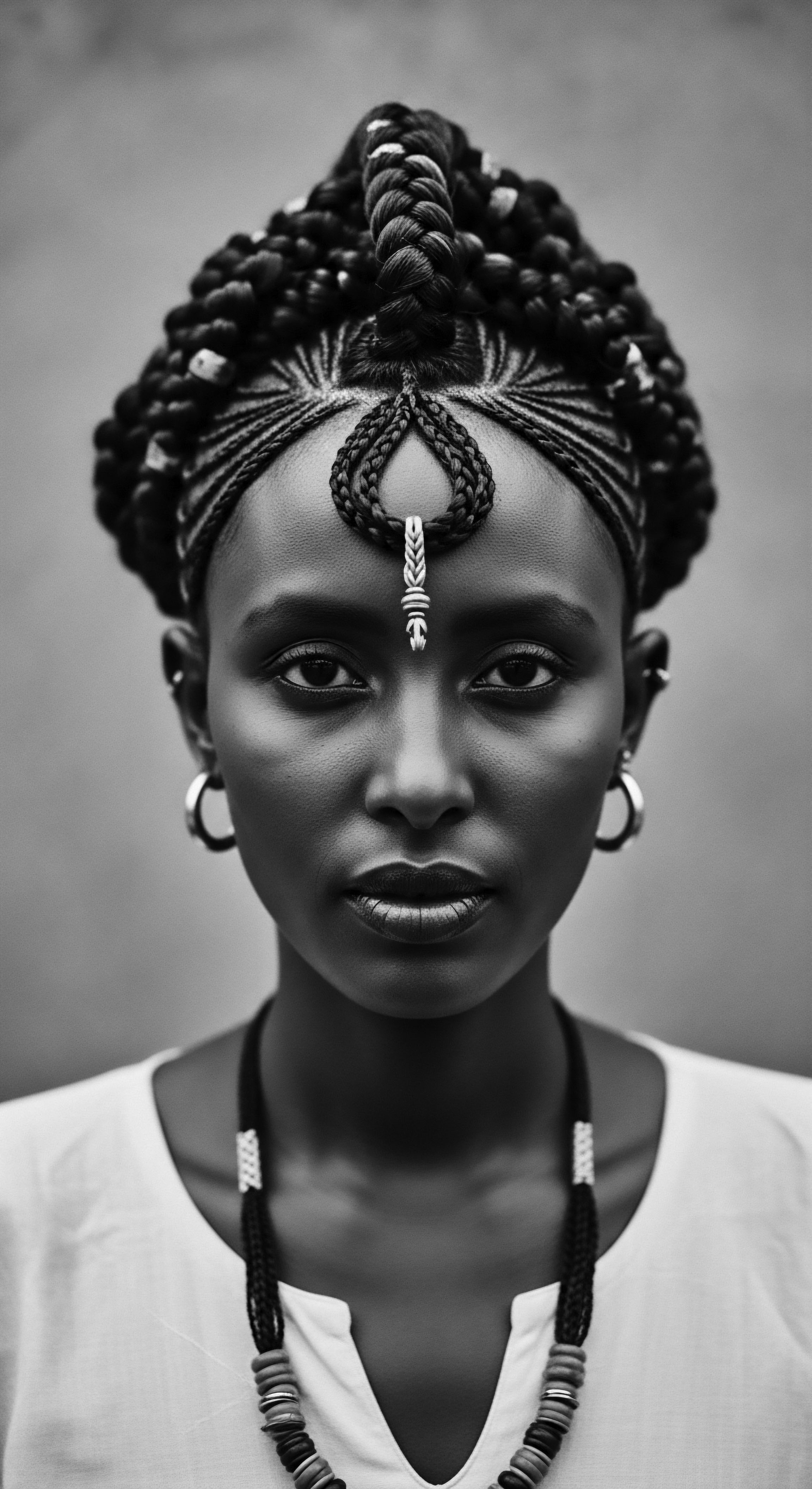
Reflection on the Heritage of Wigs Kemet
The journey through the meaning of “Wigs Kemet” brings us to a contemplative space, where ancient whispers merge with contemporary expressions of identity. This exploration has revealed that Wigs Kemet is not merely a historical artifact or a relic of a distant past. Instead, it is a living concept, a resonant echo of ancestral wisdom, and a powerful metaphor for the enduring heritage of textured hair within Black and mixed-race communities. Its meaning expands beyond the physical wig, encompassing a profound understanding of care, status, artistry, and spirituality that flowed from the heart of ancient Kemet into the veins of future generations.
As we consider the threads of time, it becomes clear that the meticulous attention paid to hair in Kemet—from the use of natural oils to the intricate braiding patterns—laid foundational principles that persist in textured hair care today. These are not coincidental similarities but rather evidence of a continuous cultural lineage, a testament to the resilience of knowledge passed down through generations, often silently, through embodied practice and visual legacy. The capacity of these traditions to survive, adapt, and continually reassert themselves speaks volumes about the inherent strength and cultural richness embedded within Black and mixed-race hair experiences.
The concept of Wigs Kemet urges us to see our textured hair not just as a biological feature but as a sacred component of our being, connected to a vast and ancient heritage. It encourages a reverence for the ingenuity of our ancestors, who understood the profound relationship between external adornment and internal well-being. This understanding empowers us to reclaim narratives around hair, celebrating its unique textures and forms as direct expressions of an unbroken cultural story. It stands as a powerful reminder that the beauty and complexity of textured hair today are steeped in a legacy of sophisticated care and profound meaning, a truly unbound helix of history, identity, and future possibility.

References
- Fletcher, Joann. (1995). Ancient Egyptian Hair ❉ a study in style, form, and function. University of Manchester.
- Fletcher, Joann and Salamone, Filippo. (2016). “An Ancient Egyptian Wig ❉ Construction and Reconstruction”. Internet Archaeology, 42.
- Manniche, Lise. (1989). An Ancient Egyptian Herbal. University of Texas Press.
- McCreesh, Natalie, et al. (2011). “Ancient Egyptian hair gel ❉ New insight into ancient Egyptian mummification procedures through chemical analysis”. Journal of Archaeological Science, 38(11), 3290-3294.
- Nicholson, Paul T. and Shaw, Ian. (Eds.). (2000). Ancient Egyptian Materials and Technology. Cambridge University Press.
- Russell, Kathy, Wilson, Midge, and Hall, Ronald. (1996). The Color Complex ❉ The “Bleaching Syndrome” in African America. Anchor Books.
- Wilfong, Terry G. (1997). Hair in Ancient Egypt. University of Michigan.
